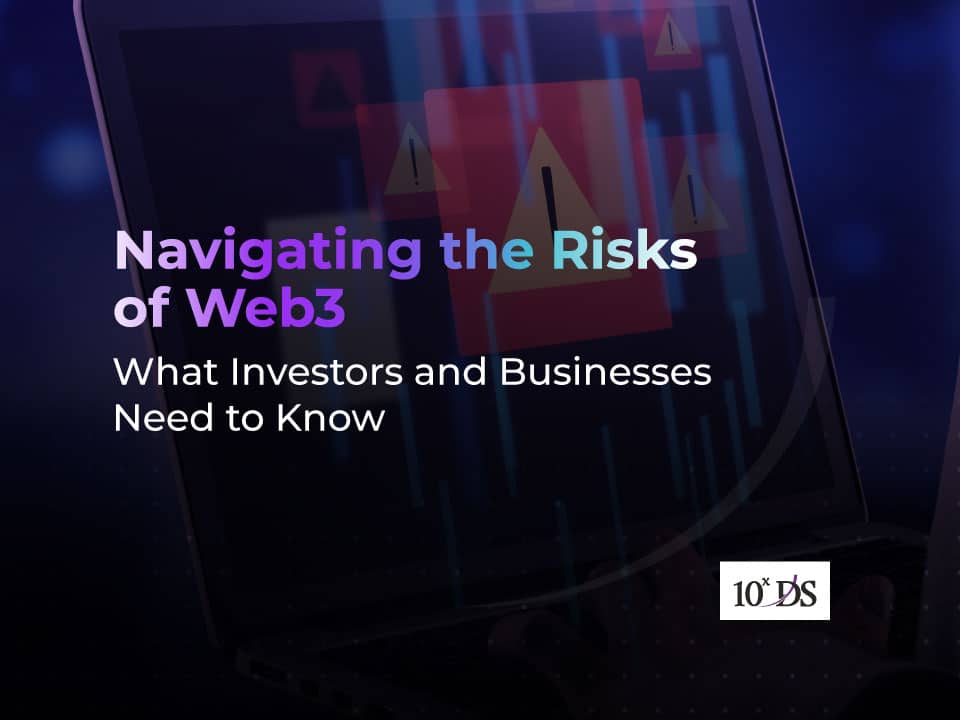
Navigating the Risks of Web3: What Investors and Businesses Need to Know
The origins of Web3 can be traced back to the launch of Bitcoin, the first blockchain-based cryptocurrency, in 2009. Since then, a wide range of blockchain technologies and platforms have emerged, each with their own unique features and capabilities. The term “Web3” itself began to gain popularity in the early 2010s, as developers and entrepreneurs began to explore the potential of blockchain technology to create a new decentralized internet. Today, there are many Web3 projects and platforms in development, and the ecosystem continues to grow and evolve at a rapid pace. It is important to note that Web3 is still a relatively new technology, and there are many challenges that need to be overcome before it can be widely adopted. However, many experts believe that Web3 has the potential to transform the way we interact with technology and with each other, and that it represents a major shift in the evolution of the internet.
Unlike the current internet (Web 2.0), which relies on centralized servers and data storage, Web3 is based on a decentralized network of computers that allows for greater privacy, security, and control for users. Web3 also enables the creation of decentralized applications (dApps) that run on top of the blockchain network. These dApps can provide a wide range of services, from financial applications like decentralized exchanges (DEXs) and stablecoins, to social media platforms, gaming platforms, and more. Because they are decentralized, these dApps can provide greater privacy, security, and control for users compared to traditional centralized applications.
While the potential benefits of Web3 are numerous, there are also several risks that should be considered:
Security Risks
As with any new technology, there are potential security risks associated with Web3. Smart contracts, which are self-executing contracts with the terms of the agreement between buyer and seller being directly written into lines of code, can be vulnerable to hacks and exploits if not coded properly. Flaws in smart contracts can lead to funds being lost or stolen, and there have been several high-profile incidents of smart contract vulnerabilities being exploited. Additionally, decentralized exchanges (DEXs) and other dApps may also be vulnerable to attacks and security breaches. Because DEXs are decentralized, they can also be vulnerable to hacks and attacks. In 2021, the decentralized exchange THORChain suffered a multi-million dollar hack that resulted in the loss of user funds.
Regulatory Risks
Web3 is still a relatively new technology, and there is a lack of regulatory clarity surrounding it. As a result, there may be legal and regulatory risks associated with using and investing in Web3-based projects. Know Your Customer (KYC) and Anti-Money Laundering (AML) regulations require financial institutions to verify the identity of their customers and prevent illicit financial activities such as money laundering. However, in the decentralized Web3 ecosystem, it can be challenging to comply with these regulations since there is no central authority or intermediary that can perform these functions. Web3 transactions and activities can be subject to taxation, but it can be challenging for regulators to identify and tax these transactions since they occur on a decentralized network. This can result in a loss of tax revenue for governments and potential legal issues for individuals and businesses. The sale and transfer of digital assets and tokens can be subject to securities laws, which are complex and vary by jurisdiction. Web3 projects that involve the sale or transfer of tokens can face legal challenges if they are found to be in violation of securities laws in their jurisdiction. It can also be challenging to ensure that user data is protected and that privacy regulations are followed and similarly copyright and intellectual property laws.
User Error Risks
Web3 users must manage their private keys, which are used to access their digital wallets and manage their digital assets. If a user loses their private key, they may lose access to their digital assets, which can be a significant financial loss. Web3 platforms are susceptible to phishing scams, where attackers create fake websites or send fraudulent emails to trick users into entering their private keys or other sensitive information. These attacks can result in the loss of digital assets or the compromise of sensitive information.
Market Risks
Web3 projects are subject to market risks, just like any other investment. The value of cryptocurrencies and tokens can be highly volatile and can fluctuate rapidly, leading to potential losses for investors. The cryptocurrency market, which is closely associated with Web3, is known for its volatility. The prices of cryptocurrencies can fluctuate rapidly based on market conditions, which may impact the value of investments in Web3-based projects or services.
Interoperability Risks
Web3 is built on a decentralized ecosystem, which means that interoperability between different dApps and platforms can be a challenge. This can create risks for users who need to transfer tokens or assets between different platforms.
In summary, the potential risks of Web3 highlight the need for careful consideration and due diligence before investing in or adopting Web3-based projects or services. It is important for businesses and investors to understand these risks and develop strategies to mitigate them, such as diversifying investments, staying up to date with regulatory developments, and partnering with reputable companies in the Web3 space.


